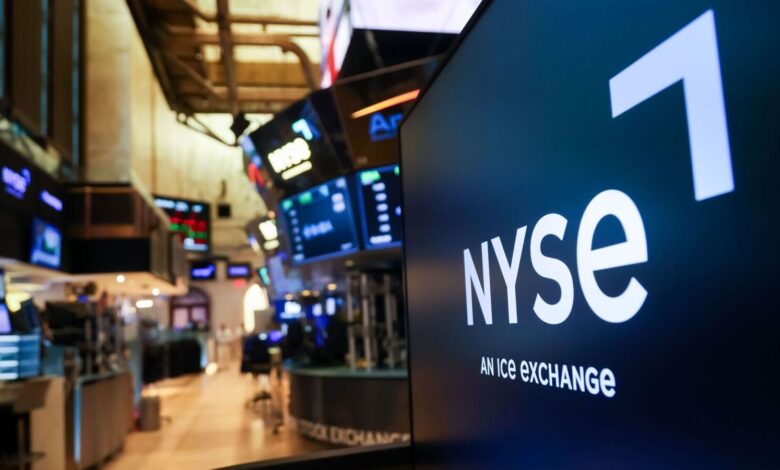US stocks are breaking records. The rest of the world is doing better.

Mounting concern about the U.S. economy’s growth prospects and a continuing trade war have led more investors to look beyond America’s shores for stocks at attractive prices. In fact, those international stocks are on pace to outperform their U.S. counterparts by the widest margin in 16 years.
The MSCI All Country World ex USA Index, which tracks developed and emerging-market stocks, is up around 26% in 2025 on a U.S.-dollar basis. That bests the S&P 500, which is up 15% and heading toward its weakest annual performance since 2022. In contrast, South Korea’s Kospi is up 64%, Germany’s DAX has increased 22%, Japan’s Nikkei 225 has climbed 24% and the U.K.’s FTSE 100 has risen 18%.
The performances mark a sharp reversal from the past decade, when strong returns from U.S. stocks gave rise to a new investment thesis: “American exceptionalism,” the belief that strong economic growth, juicy profit margins and cutting-edge tech behemoths make America’s stock market the best place on earth for investors to park their cash.
By January, concern over the health of the economy—and skepticism about the U.S.’s lead in the AI race—began to creep into investor sentiment. President Trump’s trade fights have weighed on markets sporadically, while recent news of souring corporate loans and the government shutdown have heightened anxieties on Wall Street.
Despite some choppiness, U.S. markets have continued their climb. Still, some investors are looking outside America for bargains.
“It just woke up investors to think there are alternatives here,” said Daniel Casali, chief investment strategist at U.K.-based Evelyn Partners. “We must diversify a little bit because you really don’t know what’s going to come out of the White House.”
Not every market has been a winner this year, with some countries grappling with stagnant economic growth and political instability. Argentina, which has been shut out of the international capital markets for years, is struggling with empty government coffers and thin hard-currency reserves while facing mounting debt payments next year.
One big factor behind international stocks’ hot streak: a slump in the greenback. The WSJ Dollar Index has dropped 6.3% this year, weighed down by concern about Trump’s tariffs, Federal Reserve independence and growing U.S. government debt. Dollar weakness can benefit international companies as profits in foreign countries translate into more dollars.
A resilient U.S. economy and investors’ enthusiasm for the artificial-intelligence boom lifted the S&P 500’s gains above its global peers last year. But more than half of the index’s total return in 2024 came from just a handful of big tech stocks. By the start of 2025, some analysts were already wondering if the rally was wobbling.
That has helped make international stocks an attractive alternative, said Ken Ryan, a portfolio manager at Parnassus Investments. He handles an international equity fund, up around 9.7% since its launch in the spring. Its largest holdings as of September include shares of Singapore-based Sea Ltd., the British retailer Tesco and Spain’s CaixaBank.
“This isn’t only geographic diversification,” said Ryan. “Investing in U.S. markets is almost becoming a one-way concentrated bet on the development and proliferation of AI.”
Analysts also point out that stocks abroad look cheaper than pricey U.S. shares. Companies in the S&P 500 recently traded at 23 times projected earnings over the next 12 months, according to FactSet. In comparison, Japan’s Nikkei 225 recently traded at 21 times and Hong Kong’s Hang Seng multiple was about 12.
U.S. stocks still best their international counterparts over the long haul. The S&P 500 has climbed around 225% over the past decade, while the Nikkei 225 has gained about 158% and the FTSE 100 has added roughly 49%. While U.S. economic growth is expected to slow in 2025, estimates still put it above that of some other countries.
The International Monetary Fund said in its recent projections that U.S. economic growth is likely to slow to 1.9% this year, measured on a fourth quarter versus fourth quarter basis. That is above a 1.4% projection for the U.K., 0.2% for Japan and 0.3% for Germany.
Analysts expect 11% earnings growth for S&P 500 companies over the next year, the best growth rate since the beginning of the pandemic recovery in 2021, according to FactSet. Expectations for lower interest rates and tax cuts are also expected to bolster corporate coffers and keep the economy chugging along.
Many analysts also said that the U.S. remains ahead of the rest of the world in the AI race and that the blitz of multibillion-dollar deals between OpenAI and companies including Nvidia, Oracle, Advanced Micro Devices and Broadcom will provide fresh fuel for AI shares, and other U.S. stocks, to run further.
“The question is, do you want to underweight what is this primary driver of innovation, growth, profit margins?” said Josh Emanuel, chief investment officer at Wilshire. “From our perspective, the answer is no.”
Write to Krystal Hur at krystal.hur@wsj.com





